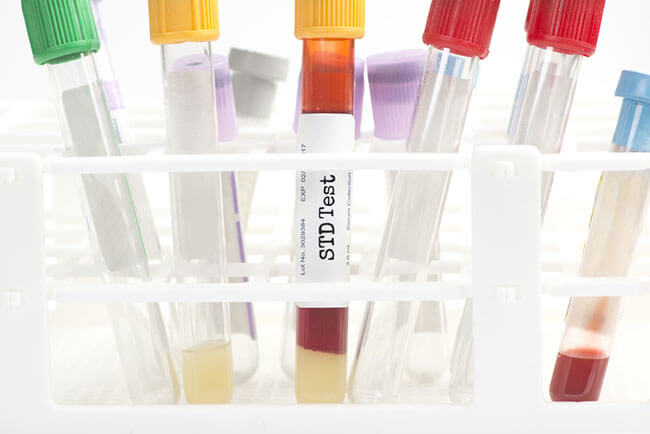Contrary to popular belief, STD tests are rather simple and feature a very low risk of erroneous results. However, missing the optimal testing window for particular STDs is a sure way of receiving false negatives. The first thing you should investigate if you suspect recent exposure to any STD is its incubation period. After the infection has multiplied enough to be seen in the test sample, you can proceed to perform an STD test without the fear of misleading and incorrect results.
In order to properly gauge how accurate STD tests are, we will go over the most common infections and precision percentages of their respective tests.

Gonorrhea & Chlamydia
The presence of chlamydia and gonorrhea is usually tested using a rectal or oral swab or urine sample. The test is designed to detect the unique RNA or DNA of the bacteria or virus and amplify it exponentially. This process is called nucleic acid amplification (NAAT) and its accuracy percentage is 90%. False positives are extraordinarily rare and occur in just one percent of cases. NAAT tests usually pick up 20-50% more infections than earlier testing solutions (like cultures, for example).
Trichomoniasis
Trichomoniasis is a silent parasite that usually infects people without presenting any symptoms. Again, NAAT is the best way of detecting this infection. Its accuracy percentage is between 76 and 100%. The parasite can also be detected through a culture. Note that urine samples are not as effective as NAAT since urine is toxic to the parasite.
Herpes
The CDC does not recommend herpes testing in asymptomatic individuals. This is not a medical recommendation, however. Studies have shown that people who have no symptoms but are infected with herpes continue to engage in risky activities. It is only when the symptoms present themselves that these individuals start changing their routines. If you develop a sore, the best test for herpes is called PCR (polymerase chain reaction). Its accuracy sits at around 96%.
Your physician or nurse will extract a sample from the sore and the test will detect genes from the herpes virus. Herpes can also be detected in the blood by identifying antibodies created to fight the virus.
Syphilis
The most common syphilis test is designed to detect the presence of antibodies in the blood. Doctors cannot always control the outcome of this test, so science has been struggling for years to introduce a better diagnostic solution. According to one study, the accuracy of this test should be around 85%.
HPV
Most cancer-related HPV strains (16 and 18) do not cause any symptoms in the affected individual. If you develop warts caused by HPV, the most likely culprits are strains 6 and 11. These are not associated with cancer, except in extremely rare cases. They can be identified by your physician during a physical examination. There currently aren’t any FDA-approved HPV tests for men and there are no testing options that could detect the virus around the cervix. However, between 85% and 90% of sexually active individuals have had HPV at some point in their lives and most of them fought off the infection on their own.
HIV
The “main” HIV tests are performed using blood samples and they are extremely accurate (99.5% of the time). There are three types of tests at your disposal: antigen/antibody tests, which detect HIV antibodies produced by your immune system, antibody tests, which detect antibodies in your saliva and blood, and nucleic acid tests, which detect the virus in your blood.
